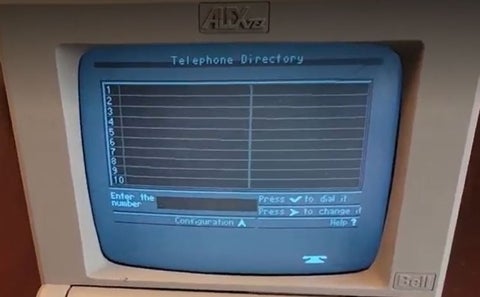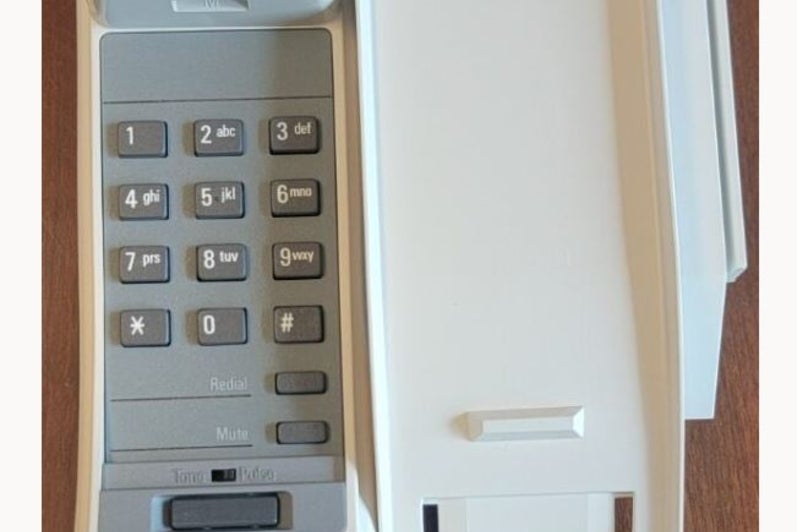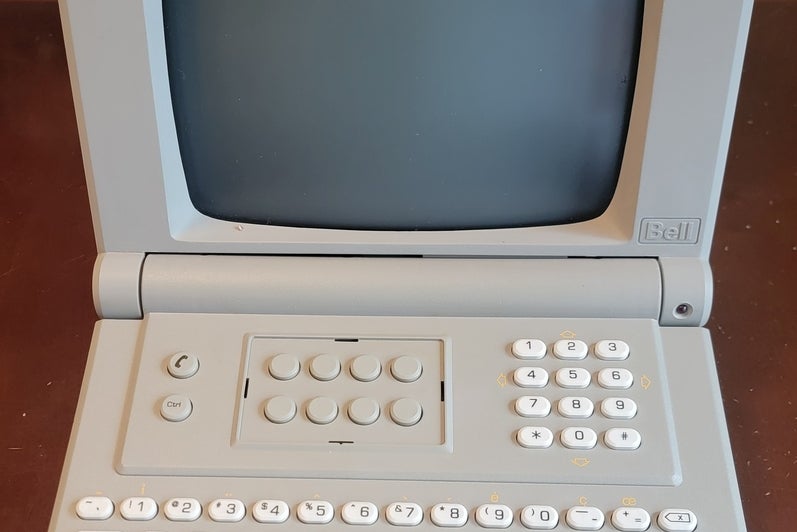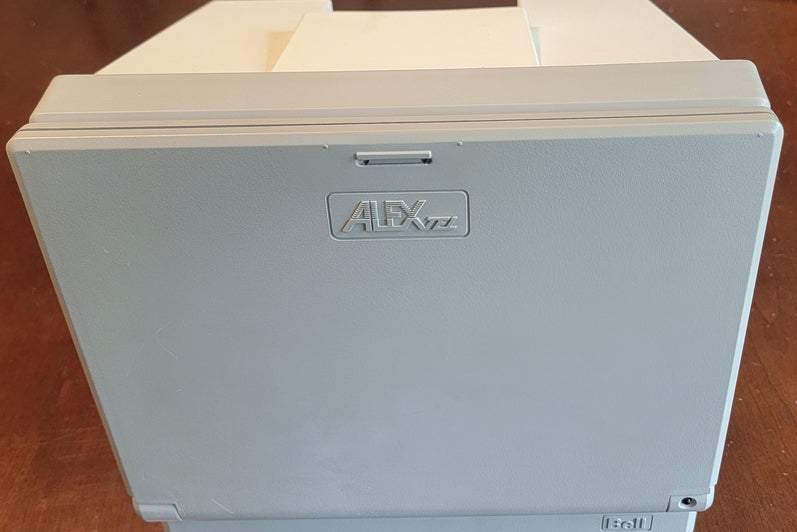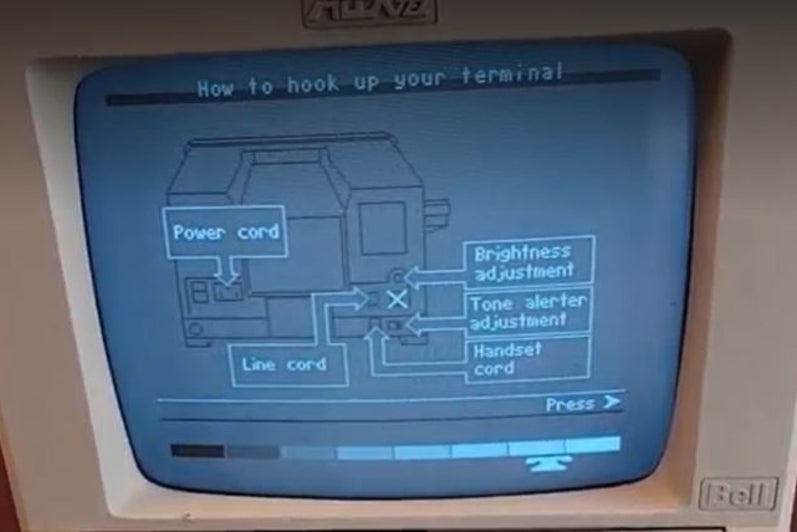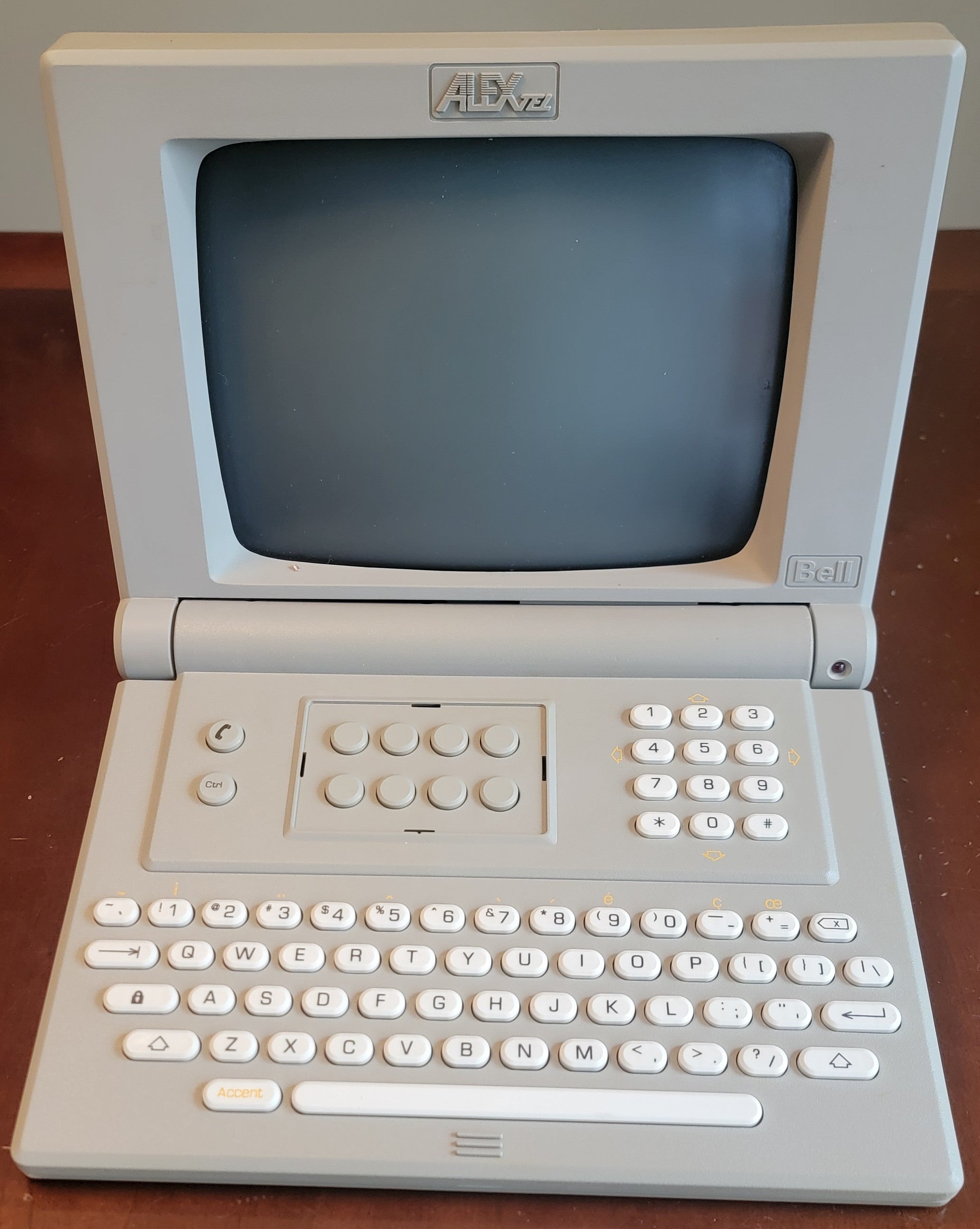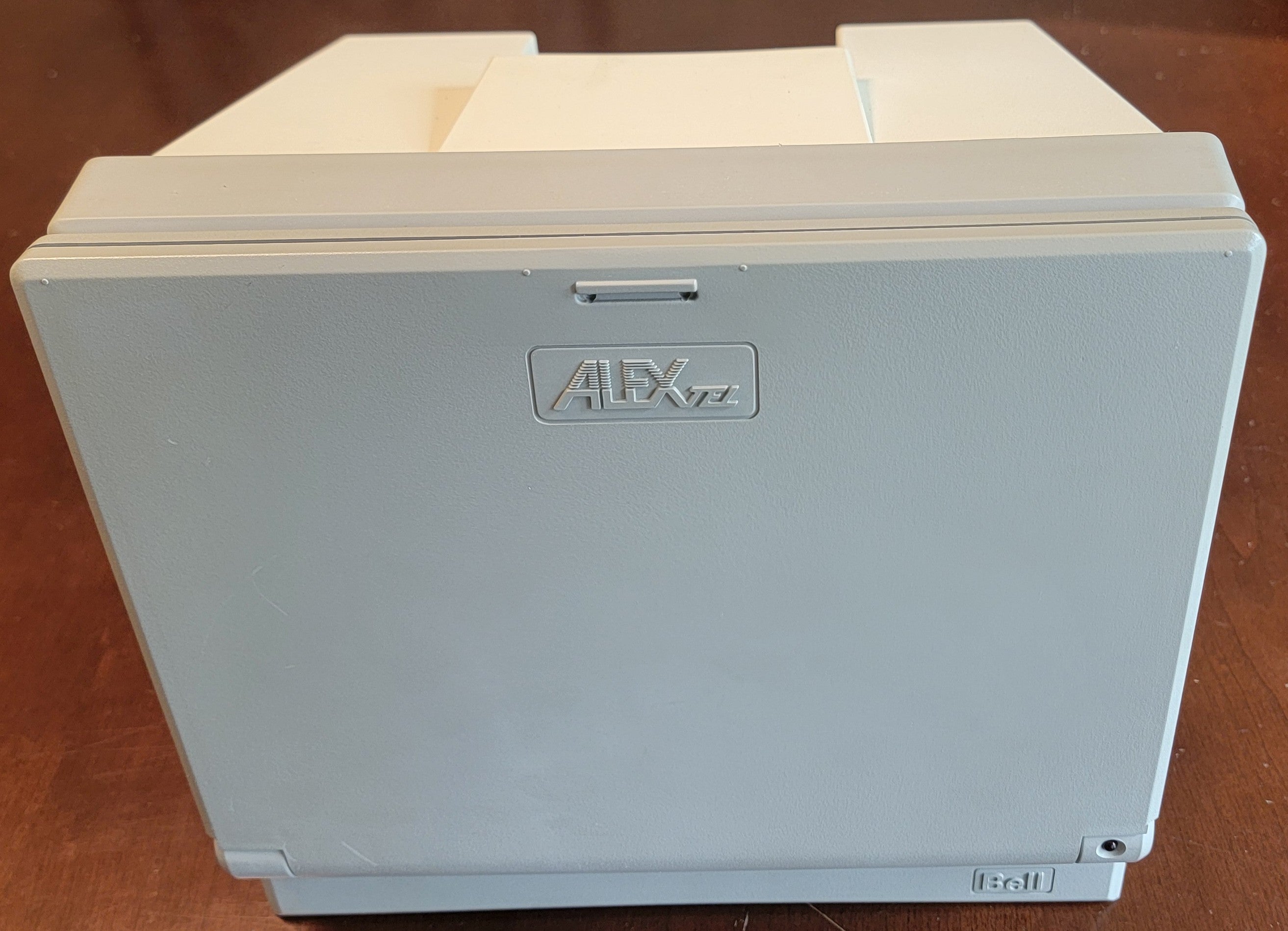Featured Artifact: ALEX Videotex Terminal
Videotex
Between the late 1970s and the early 2010s, a form of connection by calls or text was through videotex. Interactive videotex was an early form of an interactive information system facilitated through modems. Communications were displayed on a television or dumb terminal, standardized to a 40x24 grid of text with early graphics characters. Regular computers could be expanded to include videotex software, although there were some devices offered that were specifically dedicated to its use. The users could dial into servers commonly able to hold around 32 to 120 simultaneous users.
ALEX videotex Terminal
Originating in Canada and built by Northern Telecom, ALEX was an early videotex communications service. The terminal, released to the public in 1988, included a CRT monitor attached to a keyboard with eight extra function keys, and a phone. The screen and keyboard fold up and include additional spots to plug in peripherals such as card readers or printers. Additionally, the terminal could be modified with ALEX emulation software packages for other PCs.
ALEX was supported with the Bell telecommunications network, where users could dial into a Videotex Access Point allowing them to send and receive messages. The largest frustration with the service was the charges that came with extensive calls (up to CA $0.30 per minute), particularly on chat rooms.
With the development of the World Wide Web, there was no longer a need for videotex services, such as ALEX, as users now had free access to quickly developing interactive services.
This device was donated by ArcelorMittal Dofasco.
Images of the museum's ALEX
About the author
Charlotte is a Physics and Astronomy student currently in her 2B term at Waterloo. She enjoys tinkering and creating all forms of art in her free time. She works at the Computer Museum as their current Winter 2024 coop student.
